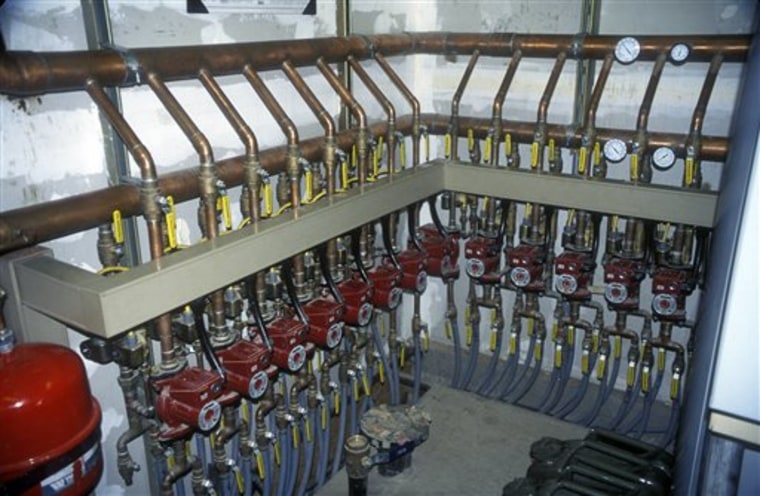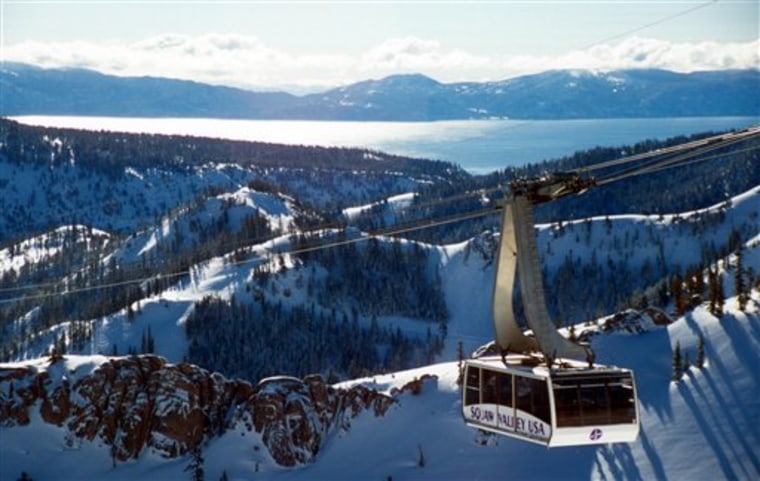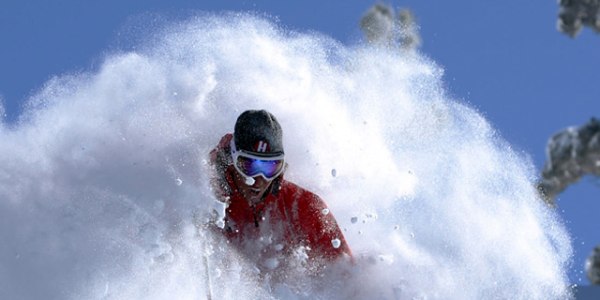Ski resorts are getting greener, and they're seeking recognition for it — partly to boost their image with their environmentally conscious clientele. To educate the public and recognize the best programs, one grass-roots organization, the Ski Area Citizens' Coalition, tracks the environmental impact and efforts of 82 ski areas in 11 Western states and has issued an annual report card each of the past 11 years.
The Ski Area Citizens' Coalition's most recent report card gave the highest marks to Squaw Valley USA in Lake Tahoe, Calif. At Squaw Valley, leftover energy from cooling a mountaintop ice rink heats a swimming pool and hot tub. Incinerators burn 99 percent of the waste from resort restaurants and create heat to warm buildings and walkways. The children's center has a geothermal heat pump, and the lifts have sensors that cut back the power output on slow days.
"Our environmental initiatives are deeply ingrained within the company, so it's really a part of every department and every employee here," Squaw Valley's Amelia Richmond said. "Basically, what separates us and the reason we've been able to do so well is that it's an ownership, an accountability we feel here for our resort."
No matter the effort, big or small, negating the environmental impact of a ski area isn't easy. The carbon footprint of most resorts isn't a pair of booties tiptoeing across the snow, but more like an entire battalion marching across the mountain. While some resorts have legitimate initiatives that really do help offset their carbon footprint, others put together look-what-we're-doing lists that are little more than marketing campaigns.
The biggest impact comes from initial development or later expansion of the area: clearing trees, changing wildlife and vegetation habitats, altering watersheds. There's so much more, though, from transportation for skiers to get there, maintenance of the mountain and facilities — mowing in the summer, snowmaking and trail grooming in the winter, heating the buildings — to the pollution created by the factories making the clothing and equipment used for skiing.
"If you think about it, the carbon footprint is really large," said Gene Likens, founding director and president emeritus of the Cary Institute of Ecosystem Studies, an independent research facility in Millbrook, N.Y. "If you look at everything that goes into this type of recreation, that's a pretty big carbon impact."

The Ski Area Citizens' Coalition bases its ratings on surveys sent to the ski areas, public records from government agencies like the U.S. Forest Service and information from local conservation groups.
Each ski area receives an overall grade as well as grades in each of four categories: habitat protection, watershed protection, addressing climate change and environmental practices and policies.
The organization looks at everything from recycling programs to plans for expansion, which is a sure way to get a low grade because of the impact it has on the environment.
Slideshow 27 photos
Popular ski and
In fact, one of the coalition's messages is that small ski areas frequented by locals are often, as the group's website puts it, "good environmental stewards of the public and private lands upon which they operate," precisely because they aren't constantly expanding and building new facilities like the big corporate-owned resorts.
"It's an awareness, educational thing," said Paul Joyce, research director for the Ski Area Citizens' Coalition. "The most important part of the scorecard is making people aware of all these issues, all these impacts a resort can have — most of the stuff most people probably don't even think about."
While many larger resorts are trying to lighten their footprint these days, Aspen Ski Country started eco-friendly initiatives for its four mountains early, way back in 1997. Aspen now has one of the largest solar-power systems in the industry, fuels its trail-grooming machines with biodiesel and was the first resort to become third-party certified as a green company. About half its employees also donate $1 a week to the Environment Foundation in a match program that's raised $1.5 million.
Park City Mountain Resort in Utah uses renewable energy to power its chair lifts and has purchased more efficient snowmaking equipment while reducing its fleet of snowmobiles. The resort also prints mountain guides and trail maps on recycled paper, and started using dishes that can be washed instead of disposable ones in its lodges.
Mount Bachelor Ski Resort in Bend, Ore., hired a team of climatologists to conduct studies for reducing the resort's carbon footprint, uses biofuel from recycled cooking oil for its shuttles and non-petroleum based cleaners for housekeeping.
Smugglers' Notch Resort in Vermont has a water treatment facility dubbed "The Living Machine" that uses a natural biological process to treat wastewater. The resort also has gas-fired boilers to heat its pools and works with scientists to protect wildlife habitats for animals like black bears and a bird called the Bicknell's Thrush.
While these initiatives only put a dent in the carbon footprint left by the ski areas, reports from the Ski Area Citizens' Coalition suggest that efforts are increasing. Of the resorts evaluated by the group, 26 received a grade of B or higher and the overall improvement was 2 percent, the fourth straight year it's gone up.
"Any efforts that they can do that are more than just cosmetic ... to reduce that carbon footprint, I applaud," Likens said.

